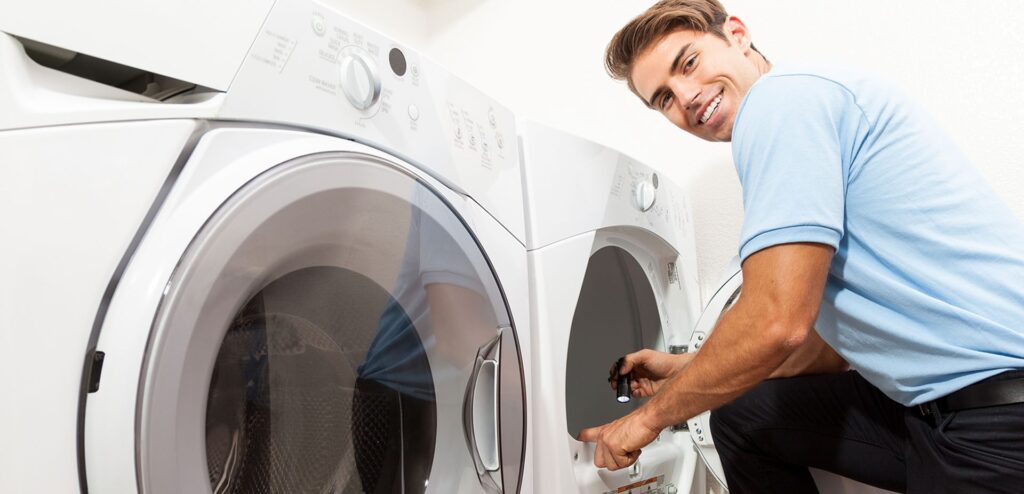Dryers are a crucial part of any Chicago household, especially during the city’s cold and humid seasons. But what many residents overlook is the importance of Cleaning Dryer Lint Trap consistently. Failure to maintain this small yet vital component can lead to a variety of hazards—some inconvenient, others potentially life-threatening.

In this article, we’ll examine the major risks associated with neglecting lint trap maintenance, explain why cleaning dryer lint trap in Chicago homes is essential, and help you avoid costly or dangerous outcomes.
Regularly Cleaning Dryer Lint Trap in Chicago homes can improve dryer efficiency, prevent fires, and lower your electricity bills.
Why Cleaning Dryer Lint Trap Matters
The lint trap in your dryer collects small fibers, dust, and particles that come off clothes during the drying cycle. While it helps maintain air flow and trap debris, it requires regular cleaning to work efficiently.
Let’s explore what happens when that trap is ignored.
Top Risks of Not Cleaning Dryer Lint Trap in Chicago
| Risk | Description |
|---|---|
| Fire Hazard | Lint buildup can ignite and lead to house fires. |
| Reduced Energy Efficiency | Blocked airflow forces the dryer to work harder, consuming more energy. |
| Longer Drying Times | Clothes may take two or more cycles to dry, leading to inconvenience. |
| Wear and Tear on Appliance | Overheating damages internal parts, shortening dryer lifespan. |
| Mold and Mildew Growth | Trapped moisture due to poor ventilation promotes mold growth inside the unit. |
| Increased Utility Bills | Longer cycles mean more electricity or gas used per load. |
| Clothing Damage | Excess heat can shrink or wear out clothes faster. |
The Fire Risk in Chicago Homes
One of the most serious consequences of not cleaning dryer lint trap regularly is the risk of fire. According to the U.S. Fire Administration, dryers cause approximately 2,900 home fires every year—and failure to clean the lint trap is the leading cause.
Chicago homes, especially older buildings with outdated ventilation systems, are more susceptible. The cold winters also mean dryers are used more often, raising the risk of overheating due to lint blockage.
Higher Energy Bills and Lower Efficiency
Chicagoans are no strangers to high energy costs in winter. But did you know a clogged lint trap can make your dryer consume up to 30% more energy? When the airflow is obstructed, the machine has to work longer and harder to dry your clothes. Over time, this inefficiency adds hundreds of dollars to your utility bills.
Simply cleaning dryer lint trap after every use can restore energy efficiency and reduce waste.
More Wear and Tear on Your Dryer
Dryers are not cheap to replace or repair. Running your machine with a blocked lint trap strains the motor, heating elements, and other components. That excess heat and pressure shorten the life of your appliance, forcing you into unexpected repair bills or early replacement.
Mold, Odors, and Indoor Air Quality
In a humid city like Chicago, moisture buildup is a concern. When lint accumulates, it can trap moisture inside the dryer and vents. This moisture encourages mold growth and unpleasant smells. Worse, those spores can spread into your indoor air, triggering allergies or respiratory problems.
Consistent cleaning dryer lint trap is one of the easiest ways to maintain indoor air quality and prevent health issues.
Cost Comparison in Chicago
| Service or Risk | Estimated Cost |
|---|---|
| DIY Cleaning Dryer Lint Trap | Free |
| Professional Dryer Lint Trap Cleaning | $75 – $150 |
| Energy Wasted per Year (from buildup) | $100 – $300 |
| Average Dryer Repair (motor, heating) | $200 – $450 |
| Dryer Replacement | $600 – $1,200 |
| Fire Damage Repair (minor to major) | $2,000 – $20,000+ |
Experts recommend Cleaning Dryer Lint Trap in Chicago after every load to avoid overheating and extend your dryer’s life.
How Often Should You Clean Your Dryer Lint Trap?
For most households in Chicago, you should:
- Clean the lint trap after every drying cycle.
- Check the lint screen for tears every few months.
- Schedule a professional dryer vent cleaning once a year.
FAQs
Q1: Can I clean the lint trap with a vacuum cleaner?
A: Yes. Use a vacuum with a narrow nozzle to remove deep lint buildup behind the screen slot.
Q2: Is professional lint trap cleaning necessary if I clean it myself?
A: Periodically, yes. Professionals clean parts you can’t reach—like ducts and vents—to ensure full safety and airflow.
Q3: What are signs that my lint trap needs cleaning?
A: Longer drying times, hot dryer surfaces, and a musty smell on clothes are all common indicators.
Q4: Can not cleaning the lint trap void my dryer warranty?
A: It can. Many manufacturers require regular maintenance, including cleaning dryer lint trap, as part of their warranty conditions.
Q5: Do apartment dryers in Chicago pose the same risks?
A: Absolutely. In fact, shared dryers in buildings may be even more neglected and prone to lint buildup.
Conclusion
In the hustle of daily life, it’s easy to forget about something as small as the lint trap. But for residents of Chicago, cleaning dryer lint trap regularly is not optional—it’s a necessary safety and cost-saving measure.
From fire hazards and mold growth to wasted energy and expensive repairs, the risks of ignoring this task are significant. Keep your home safe, your clothes fresh, and your wallet happy by making lint trap maintenance a habit today.
Read More: Chicago Dryer Vent Cleaning

